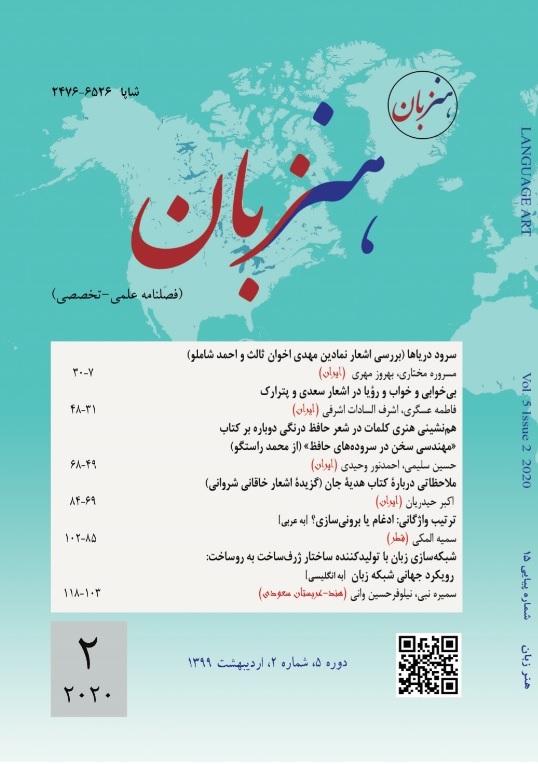ترتيب الكلم بين المزج والتّخريج
DOI:
https://doi.org/10.22046/LA.2020.11الكلمات المفتاحية:
ترتيب كلم، مزج، تخريج، نظاوسبي، نظام حسّي حركيّ، تقييمالملخص
حازت ظاهرة التّرتيب الكلّيّ للكلم واشتقاقاته المختلفة اهتماما بالغا من قبل النّظريّة التّوليديّة حيث اعتنت بتحديد الحوسبات النّحويّة المفسّرة لذلك؛ فأقامت تصوّرها التّقني للبنية على اعتبار التّرتيب [فا ف مف] ترتيبا كلّيّا يختزنه النّحو الكلّيّ في مستوى منظومة-س'، ثمّ عدلت عن هذا التّصوّر نظريّا في البرنامج الأدنويّ فافترضت أنّ النّظام أعمى عن كلّ ترتيب، وكفّ أن يكون التّنوّع في التّرتيب مشتقّا من كلّيّات فطريّة في النّحو الكلّيّ ليصبح من خصائص الأنظمة العرفانيّة الخارجيّة؛ فالأبنية تمزج مزجا حرّا في النّظام الحوسبيّ ثمّ تُخرّج وفق ترتيبات متنوّعة في النّظام الحسّي الحركيّ حسب اختلاف معطيات التّجربة. في هذا الإطار النّظريّ العامّ نخصّص هذا العمل للنّظر في الحوسبات المولّدة لترتيب الكلم في الألسن البشريّة ولنبيّن في الأثناء أنّ التّصوّر التّوليدي يطرح إشكالا تقنيا دقيقا يكمن في افتراض حوسبة مزج حرّة من جهة وفي ربط التّنوّع بعمليّة التّقييم السّماتيّ من جهة أخرى؛ فقد لاحظنا من النّاحية التقنية أنّه لا مناص في إطار البرنامج الأدنوي من اعتماد ترتيب كلّيّ منذ النّظام الحوسبيّ تشتقّ منه أنماط التّرتيبات الملاحظة في الألسن البشريّة، فكلّ معالجة اختباريّة لاختلاف الترتيب تقتضي الانطلاق حوسبيّا من بنية تركيبيّة جاهزة.التنزيلات
منشور
2020-05-30
كيفية الاقتباس
المكّي س. (2020). ترتيب الكلم بين المزج والتّخريج. هنر زبان, 5(2), 85–102. https://doi.org/10.22046/LA.2020.11
إصدار
القسم
مقالة
الرخصة
الحقوق الفكرية (c) 2020 سميّة المكّي

هذا العمل مرخص بموجب Creative Commons Attribution 4.0 International License.

